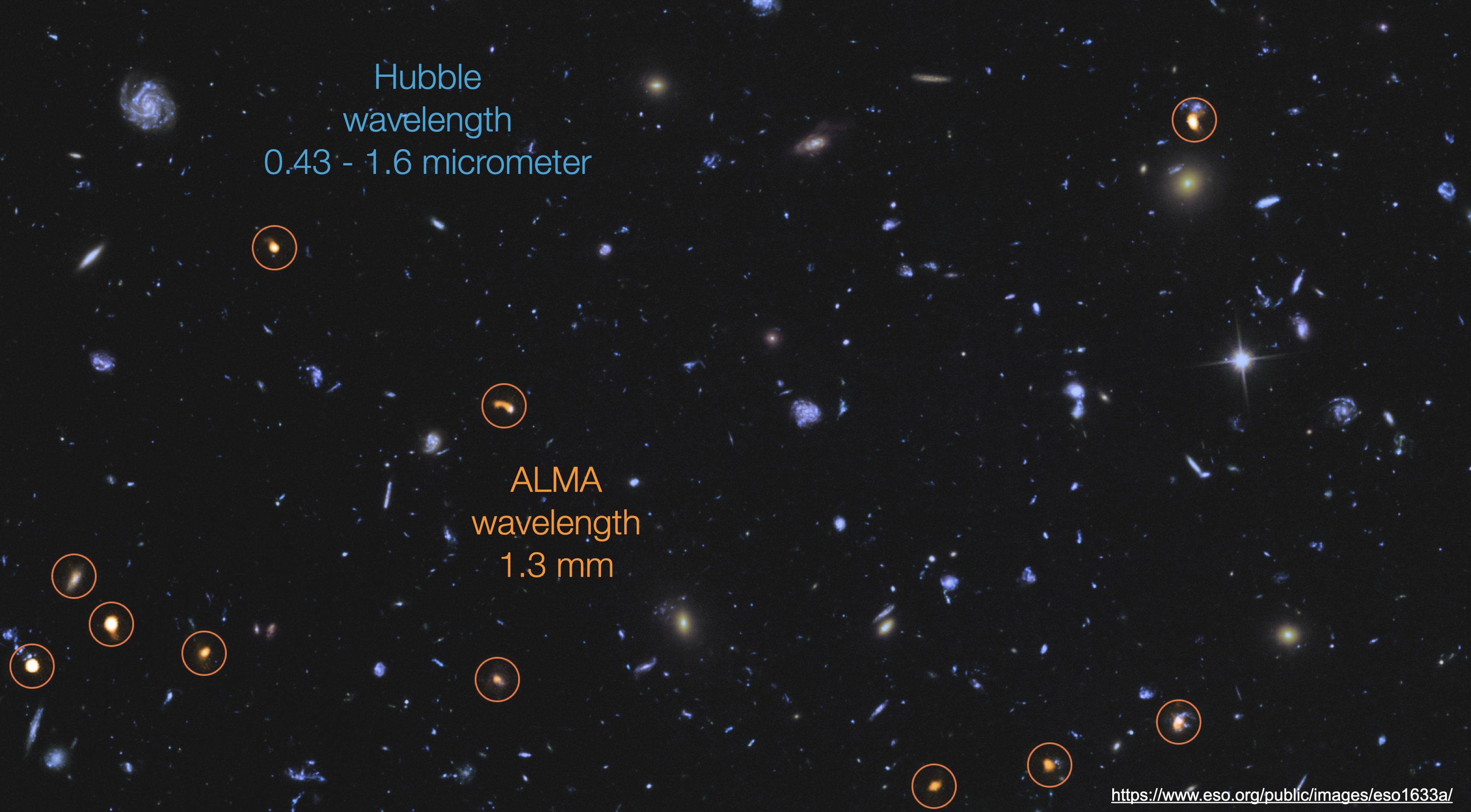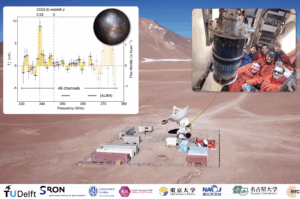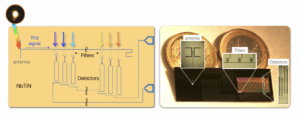Observations of the Universe at wavelengths between 0.3 – 3 mm allow us to study the cold and obscure universe. This type of radiation is emitted by cold objects such as gas and dust clouds.
Hidden in these clouds are the birth chambers of new planetary systems and even whole galaxies. Optical instrumentation cannot pierce through those clouds. Hence, the Universe looks completely different in the sub-mm than in the optical, as we see completely different objects.
Figure: Composite of a part of the optical Hubble deep field (in blue), overlayed with an ALMA image at 1.3 mm of the same field. Clearly, ALMA objects are invisible for Hubble, and vice versa.







